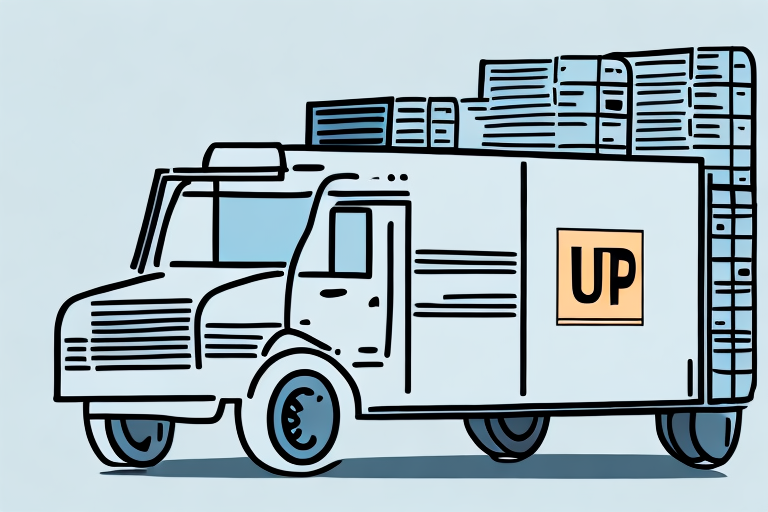Understanding the Rates for Shipping Large Packages with UPS
When shipping large packages, one of the biggest concerns is the cost. UPS is one of the leading shipping carriers, but their rates for large packages can often be higher than expected. In this article, we'll explore why this is the case, what factors affect shipping rates, and how you can save money on shipping with UPS.
Why Large Packages Cost More to Ship
The weight and size of a package greatly affect its shipping cost. Large packages take up more space on trucks and planes, which means that the carrier can fit fewer packages on a single shipment. Additionally, larger packages may require special handling, such as extra manpower or equipment, which increases the cost of shipping. UPS charges based on both weight and package dimensions, which is why the cost of shipping large packages can be much higher than for smaller packages.
Another factor that contributes to the higher cost of shipping large packages is the increased risk of damage during transit. Large packages are more likely to shift or move around during transport, which can result in damage to the contents. To prevent this, carriers may need to use additional packaging materials or take extra precautions when handling the package, which adds to the overall cost of shipping. Proper packaging and securing of large items are essential to minimize the risk of damage and ensure they arrive at their destination safely.
What Factors Affect Shipping Rates for Large Packages
As mentioned, the weight and size of a package are the primary factors that affect shipping rates. However, other factors can also impact the cost, such as the destination and the delivery time. Shipping to remote or rural areas may be more expensive than shipping to urban centers. Additionally, choosing faster delivery options will typically increase the cost of shipping.
The type of shipping service you choose can also affect the cost of shipping large packages. For example, Ground shipping is typically less expensive than Air shipping, but it may take longer to arrive at its destination. Some shipping carriers also offer additional services, such as signature confirmation or insurance, which can add to the overall cost of shipping. It's important to consider all of these factors when choosing a shipping option for your large package.
- Weight and dimensions
- Destination location
- Delivery speed
- Type of shipping service
- Additional services (e.g., insurance, signature confirmation)
How to Measure and Weigh Large Packages for Accurate Shipping Rates
To ensure that you receive accurate shipping rates from UPS, it's important to measure and weigh your package correctly. Use a tape measure to determine the package's length, width, and height, then multiply those numbers together to determine its cubic size. This is the dimensional weight, which UPS uses to determine shipping costs for large packages. Weigh the package, then compare the weight and dimensional weight to determine which number is higher. UPS will charge based on the higher of the two.
It's also important to note that UPS has specific weight and size limits for packages. For example, the maximum weight for a UPS package is 150 pounds, and the maximum size is 165 inches in length and girth combined. If your package exceeds these limits, you may need to use a freight service instead of standard shipping. Additionally, if your package is particularly fragile or valuable, you may want to consider purchasing additional insurance to protect it during transit.
UPS Shipping Options for Large Packages
UPS offers various shipping options for large packages, including Ground, Air, and Freight services. Ground service is the most cost-effective option and is suitable for packages that can take a few days to arrive at their destination. Air service is faster but more expensive and is better for packages that need to arrive quickly. Freight service is ideal for very large or heavy packages, as it uses trucks and trains to transport the packages over long distances.
Additionally, UPS offers supplementary services for large packages, such as liftgate and inside delivery. Liftgate service is necessary if the package cannot be lifted by hand and requires a special lift to be loaded onto the truck. Inside delivery is useful if the package needs to be delivered to a specific room or location within a building.
UPS also provides tracking information for all large packages, so customers can monitor the progress of their shipment and receive notifications when the package is delivered. Furthermore, UPS offers insurance options for large packages, providing peace of mind in case of damage or loss during transit.
How to Save Money on Shipping Large Packages with UPS
There are several strategies to help you save money on shipping large packages with UPS:
- Use UPS Online Shipping Tools: These tools can offer discounted rates for certain services.
- Consolidate Shipments: Combine multiple packages into a single shipment to reduce overall shipping costs.
- Choose Ground Service: Opting for Ground instead of Air service can significantly lower costs.
- Schedule Deliveries During Off-Peak Times: Shipping during weekdays or non-holiday periods may result in lower rates.
Another way to save money is to negotiate rates with UPS if you are a frequent shipper. Discussing your shipping needs with a UPS representative might secure better deals. Additionally, exploring alternative shipping options, such as using a freight carrier or a third-party logistics provider, may offer more competitive rates for large packages.
Proper packaging is also crucial to avoid additional fees or damages during transit. Use sturdy boxes, adequate padding materials, and secure the package with strong tape. If unsure about how to package your item correctly, UPS offers packaging services to help ensure your package arrives safely and securely.
Understanding UPS Dimensional Weight Pricing
UPS uses dimensional weight pricing for large packages, meaning they charge based on the package's size rather than its actual weight. This is because larger packages take up more space on their transportation vehicles, reducing the number of packages they can carry and increasing costs. To calculate dimensional weight, multiply the package's length, width, and height in inches, then divide that total by 139 for domestic shipments or 166 for international shipments.
It's important to note that UPS also has a minimum billable weight for packages. This means that if the dimensional weight of a package is less than the minimum billable weight, UPS will charge based on the minimum weight instead. For domestic shipments, the minimum billable weight is 1 pound, while for international shipments, it varies by country. Keep this in mind when shipping large but lightweight items, as the cost may be higher than expected due to the minimum billable weight.
Tips for Packaging and Labeling Large Packages for Safe Shipping
Packaging and labeling large packages correctly is vital to ensure they arrive at their destination safely and securely. Follow these tips:
- Use Sturdy Packing Materials: Opt for corrugated cardboard boxes to provide durability.
- Protect Fragile Items: Wrap fragile items in bubble wrap or foam cushioning to prevent damage.
- Clear Labeling: Clearly label the package with the recipient's name and address, as well as your own contact information.
- Descriptive Labels: Include descriptions like "fragile" or "this side up" to ensure appropriate handling during shipping.
Additionally, consider the weight and size of the package when packaging and labeling it for shipping. Ensure the package is not too heavy or too large for the chosen shipping method. If the package is too heavy, it may require special handling or incur additional fees. If it's too large, it may not fit on the delivery truck or may require special equipment for handling. Always check with your shipping provider for any size or weight restrictions before sending your package.
Comparing UPS Rates with Other Shipping Carriers for Large Packages
It's always a good idea to compare shipping rates from different carriers to find the best deal. Some other popular shipping carriers available in the US include FedEx, USPS, and DHL. Each carrier has its own rates and services, so be sure to compare them carefully to find the best option for your needs.
When comparing shipping rates, consider not only the cost but also the delivery time and reliability of the carrier. Some carriers may offer lower rates but have a higher risk of delayed or lost packages. Additionally, some carriers may offer additional services such as package tracking or insurance that may be worth the extra cost for peace of mind. Take the time to research and compare all options before making a decision.
International Shipping of Large Packages with UPS
International shipping of large packages can be more complicated than domestic shipping due to customs regulations and other factors. UPS offers specialized international shipping services that can help simplify the process. However, it's important to research the specific requirements for your destination country and ensure that your package meets all of their regulations and requirements.
When shipping large packages internationally with UPS, consider the weight and dimensions of your package. UPS has specific weight and size limits for international shipments, and exceeding these limits can result in additional fees or even the package being returned to the sender. It's recommended to use UPS's online tools to calculate dimensional weight and estimate shipping costs to ensure your package meets all necessary requirements before sending it off.
How to Track Your Shipment of a Large Package with UPS
UPS provides tracking information for all shipments, allowing you to monitor the status of your package in real-time. You can track your package using its tracking number on the UPS website or mobile app. Additionally, you can sign up for delivery notifications to receive updates via email or text message, ensuring you are always informed about your package's progress.
Understanding Insurance Options for Shipping Large Packages with UPS
UPS offers various insurance options to protect your package during shipping. Basic coverage is included with all shipments, but it may not be sufficient for high-value items. Additional coverage is available for an extra fee, providing peace of mind in the event of loss or damage. Be sure to review the different insurance options and choose the appropriate level of coverage for your package based on its value and fragility.
Common Mistakes to Avoid When Shipping Large Packages with UPS
There are several common mistakes that can occur when shipping large packages with UPS:
- Incorrect Measurement or Weighing: Not measuring or weighing the package accurately can result in incorrect shipping rates.
- Poor Packaging: Inadequate packaging can lead to damage during shipping.
- Ignoring UPS Regulations: Not reading and following all UPS regulations and guidelines can lead to delays or additional fees.
In conclusion, understanding the rates for shipping large packages with UPS can help you save money, choose the right shipping options, and ensure that your package arrives safely and on time. By following the tips and guidelines outlined in this article, you can make the shipping process smoother and more efficient for both you and your package's recipient.




















